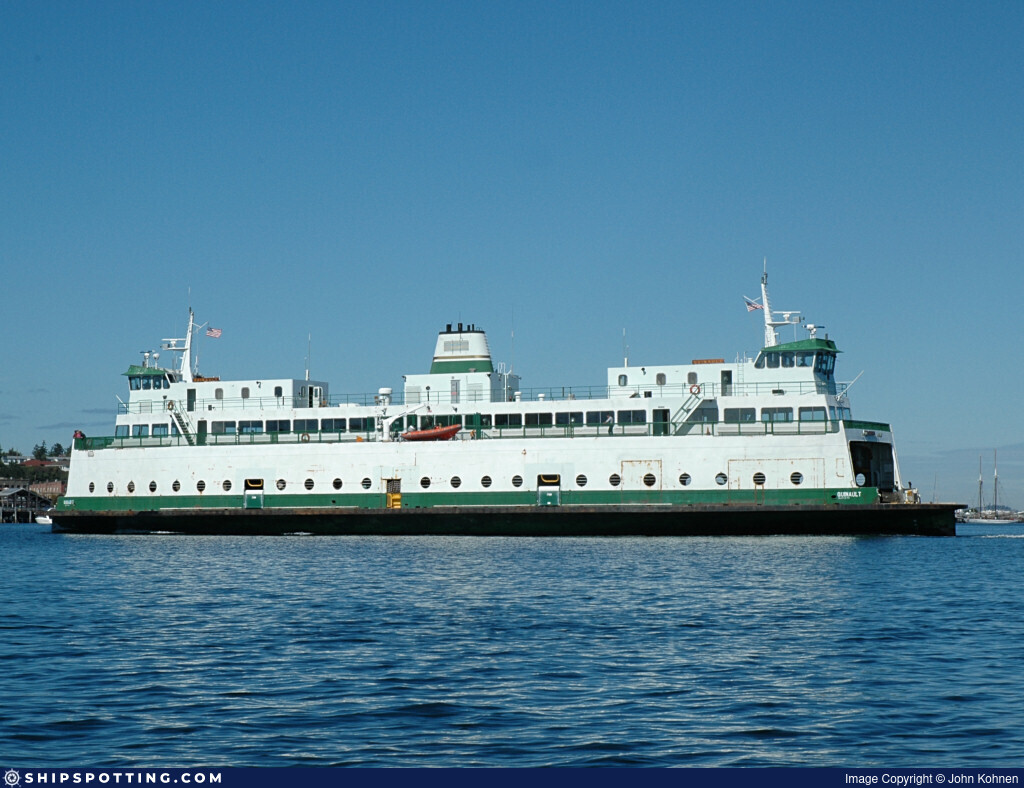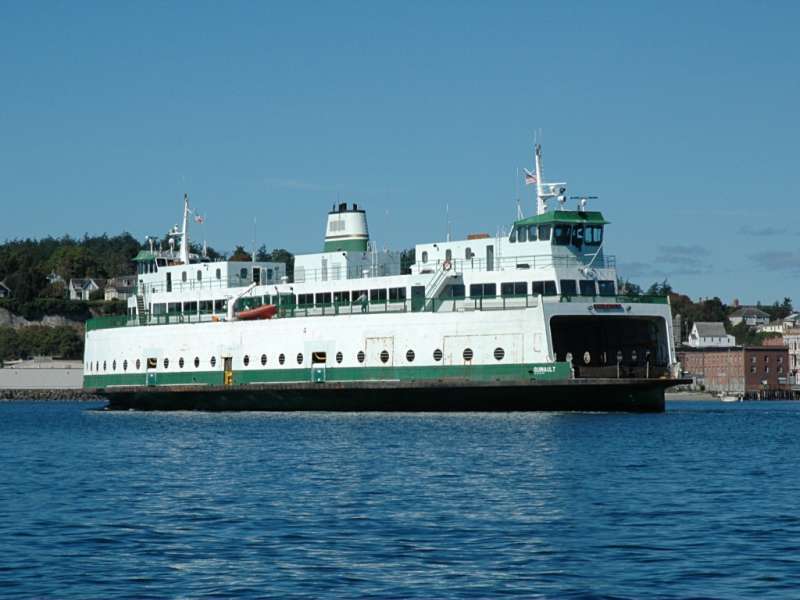
®
SHIPSPOTTING.COM
WELCOME TO SHIPSPOTTING.COM
Quinault - IMO 8836156
Photo
details
Photographer:John Kohnen [ View profile ]
Title:Quinault
Photo Category:Ferries
Added:Sep 21, 2005
Views:1,078
Image Resolution:1,024 x 768
Description:
ON 226738, IMO 8836156, built on San Francisco Bay in 1927 for the Southern Pacific Railroad as the Redwood Empire. After bridges put her out of work on SF Bay she was bought by Captain Peabody's Black Ball Line for use on Puget Sound. She was sponsoned and modernized in the 1950s and rebuilt from the hull up in the 1980s, though her original electric motors still push her along. One of four remaining "steel electrics" in the Washington State ferry fleet, Quinault will probably be retired soon. (Port Townsend, Washington, September 8, 2005)
Vessel
particulars
Current name:QUINAULT
Vessel Type:Ro-ro/passenger Ship
Gross tonnage:1,490 tons
Photos:2 photos by 1 photographers
AIS Position
of this ship
There is no AIS Position Data available for this ship!
Would you like to add AIS Coverage?

Photo
Categories
This ship exists in the following categories:
Ferries - 2 photos
Photographers
of this ship
(1)
2 photos





COMMENT THIS PHOTO(1)
Thought you might be interested in thi article:
Published: Thursday, August 23, 2007
Crack found on a second ferry
Like its sister ship, the Quinault, which serves the Keystone-Port Townsend route, was pulled because of a crack in a crucial part.
The state's oldest ferries just can't seem to catch a break.
Close inspection of the 1927-vintage Quinault shows it, too, needs replacement of key parts in its propulsion system, said Washington State Ferries spokeswoman Marta Coursey on Wednesday.
The problems are with the stern tubes, the cast-iron pipes that contain the ferry's propeller shafts where they run through the hull.
Meanwhile, the ferry Rhododendron, built in 1947, was pulled from service Wednesday morning after ferry engineers discovered about a dozen holes and cracks in the hull above the waterline. The defects are believed to be the result of corrosion from exposure to rain and sea spray, Coursey said.
It is unclear when the Rhododendron will resume its route. It runs between Tacoma and Vashon Island. Although 20 years younger than the Quinault and the state's other Steel Electric-class ferries, the Rhododendron also does not meet federal safety standards for hull design that have been in effect since the mid-1950s.
The Quinault has been in dry dock undergoing inspection and maintenance ordered by the Coast Guard. Its stern tubes were inspected after a 20-inch crack developed in a stern tube on the Quinault's sister ferry, the Illahee. The Illahee's crack allowed water to stream into the hull at a rate of five gallons per minute.
Crews at Todd Shipyards in Seattle are attempting to fabricate two new stern tubes for the Illahee. They are hopeful the work will meet Coast Guard approval and the vessel can return to service by mid-September, Coursey said.
Close inspection of the Quinault's stern tubes on Friday found them to be too corroded for continued use, Coursey said.
Ferry officials are hopeful new tubes can be fabricated for the Quinault and the vessel can be cleared to return to service by Nov. 12.
"They are not complete in their work yet," Coursey said.
Meanwhile, the state is down to two operating Steel Electric ferries. The Klickitat and the Nisqually are both being used on the route between Keystone on Whidbey Island and Port Townsend on the Quimper Peninsula. The Steel Electric ferries are the only boats in the state's 28-vessel fleet capable of using those terminals.
The Coast Guard has ordered the Nisqually into mandatory inspection and repairs after Sept. 9, the end of the summer tourist season. Until then, it has ordered unprecedented inspections of the vessel, including checks by ferry crews every four hours and weekly internal structural exams by Coast Guard inspectors.
The Coast Guard on June 26 said ongoing problems with leaking hulls were "serious in nature" and ordered the state to step up maintenance. The Steel Electrics have been the focus of increased scrutiny since the Klickitat was pulled from service in March with a 6-inch crack in the hull.
Regards
Steve Ellwood
Edit
comment